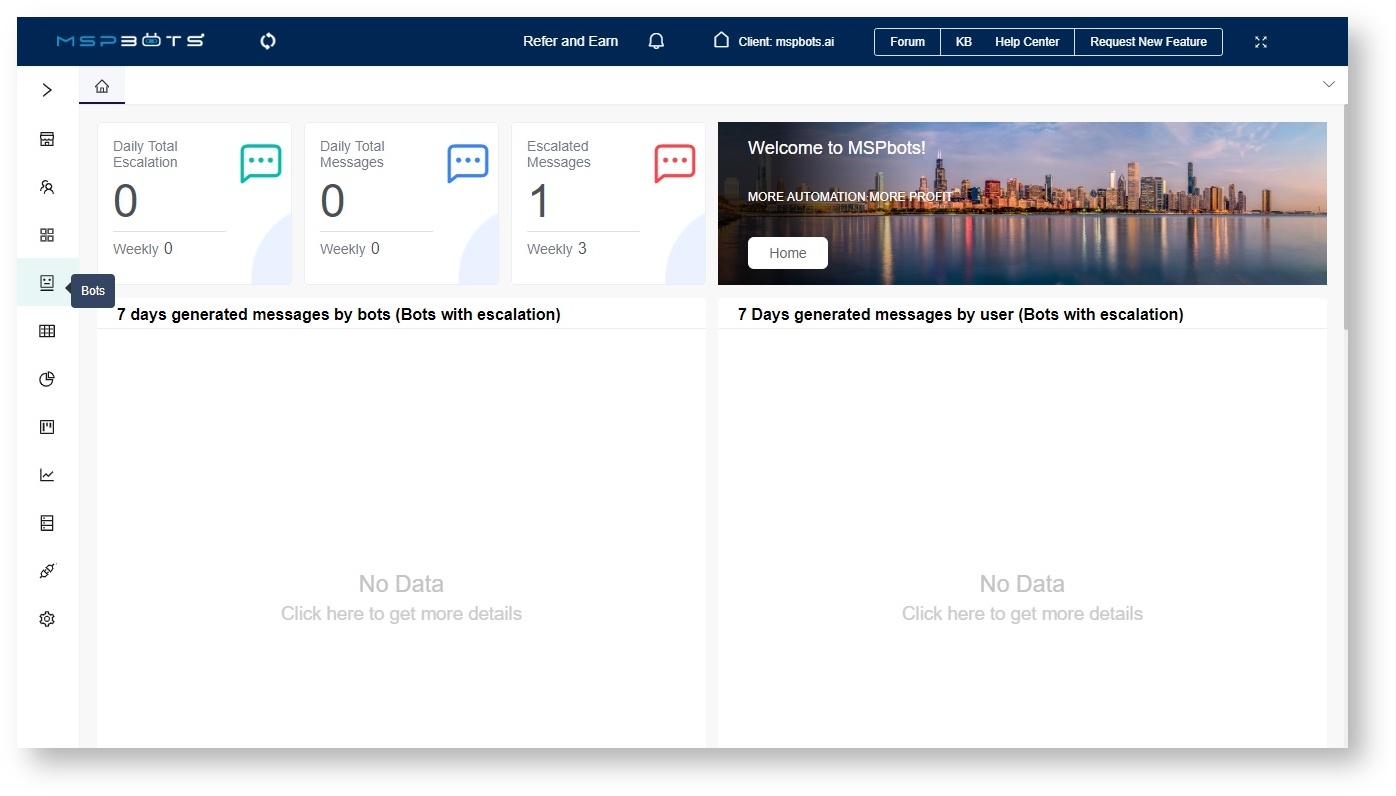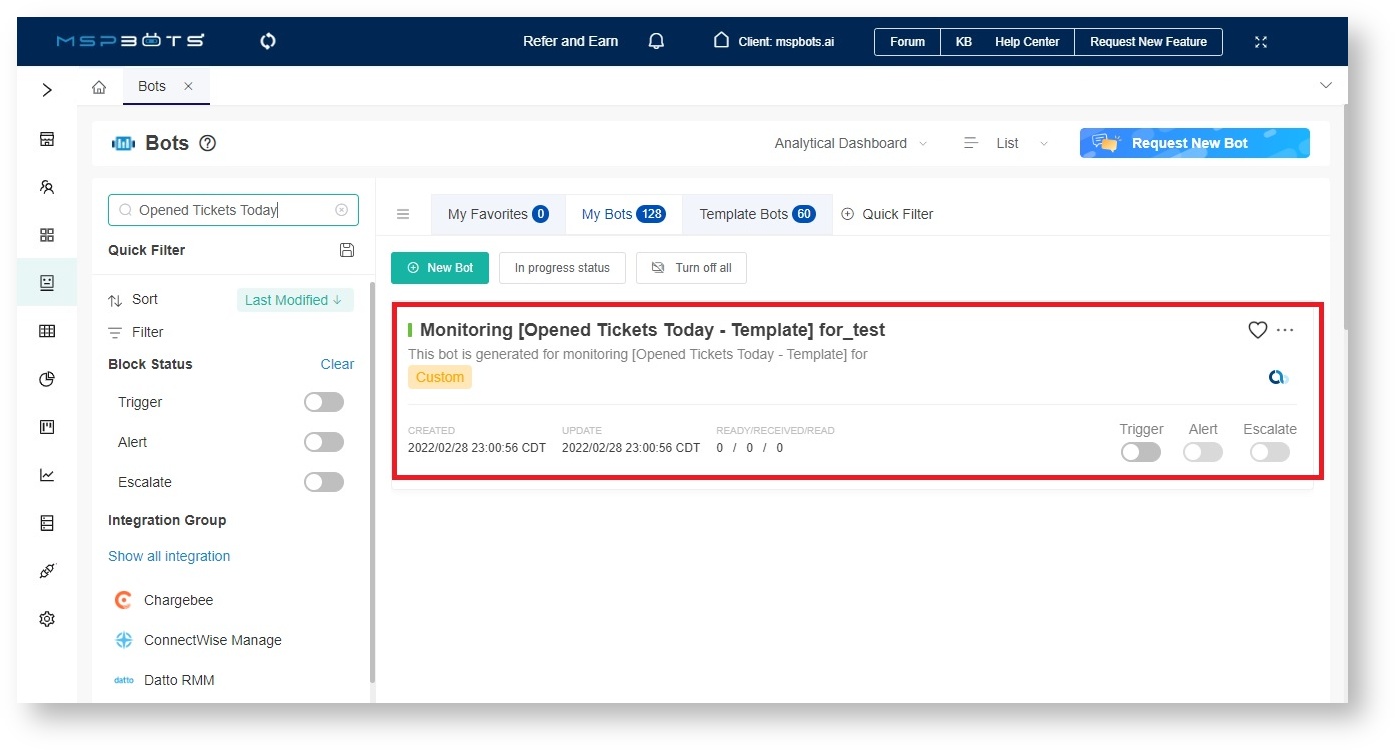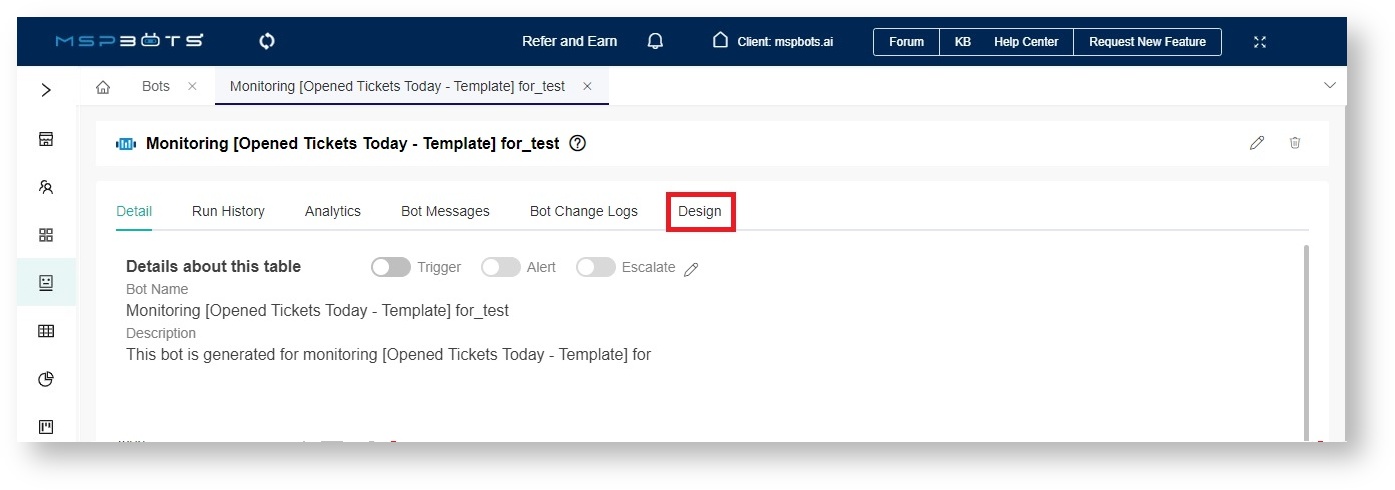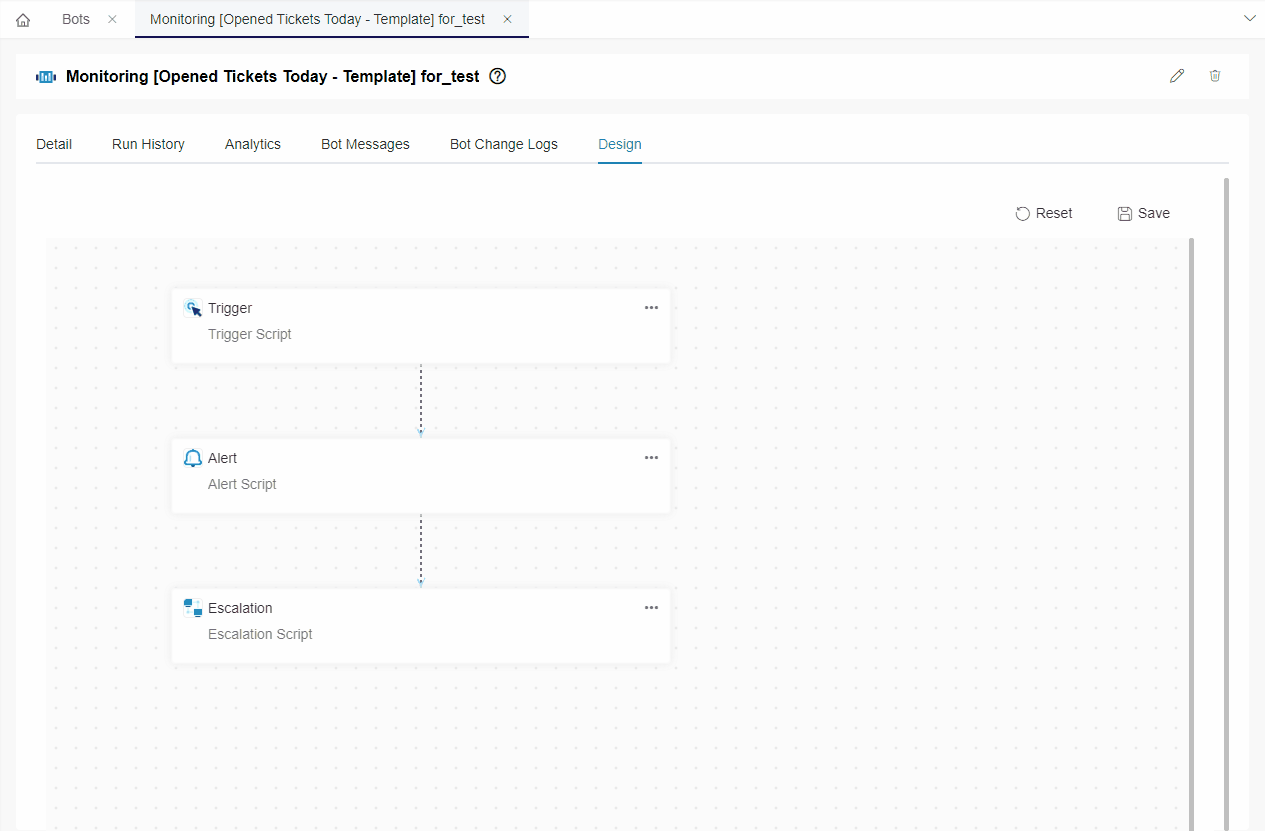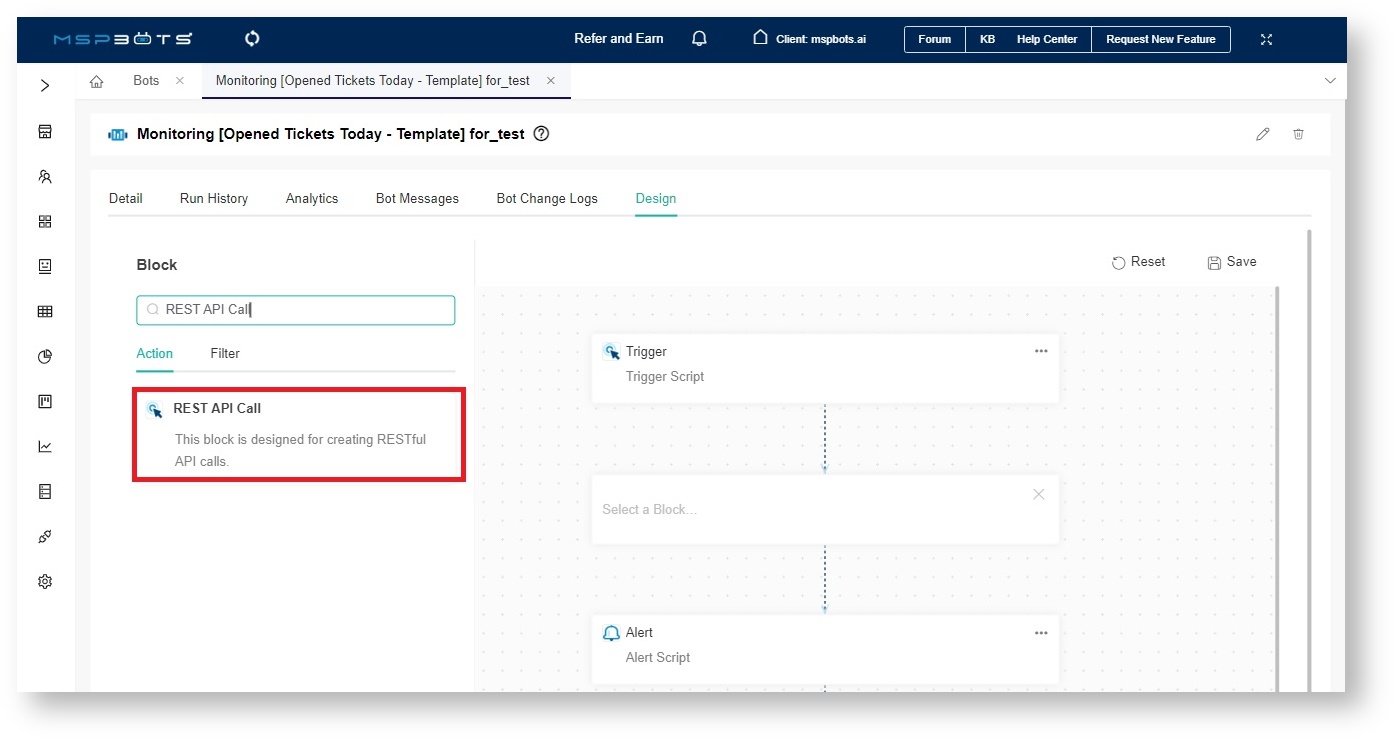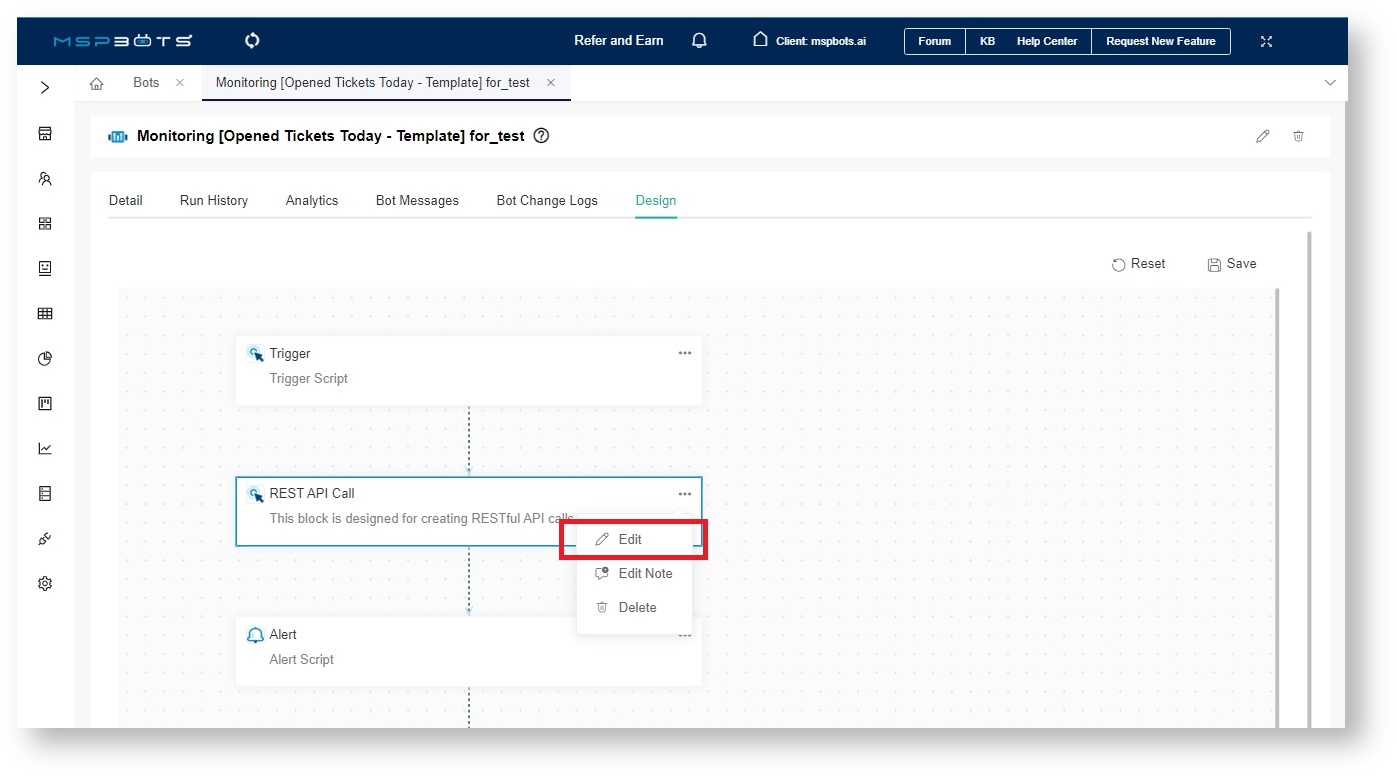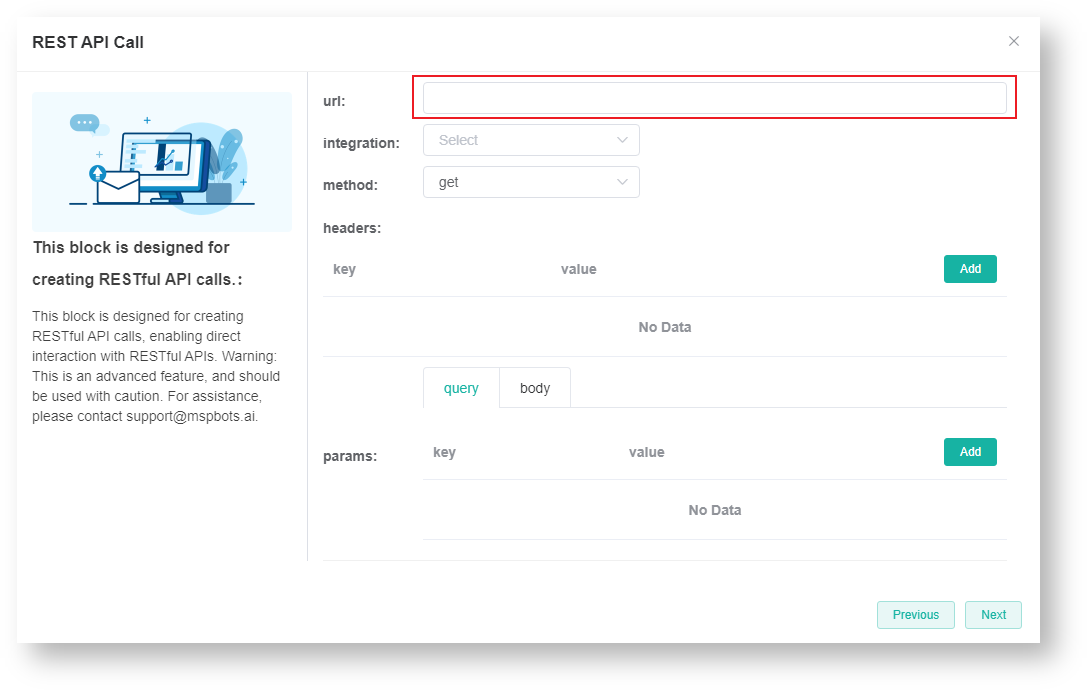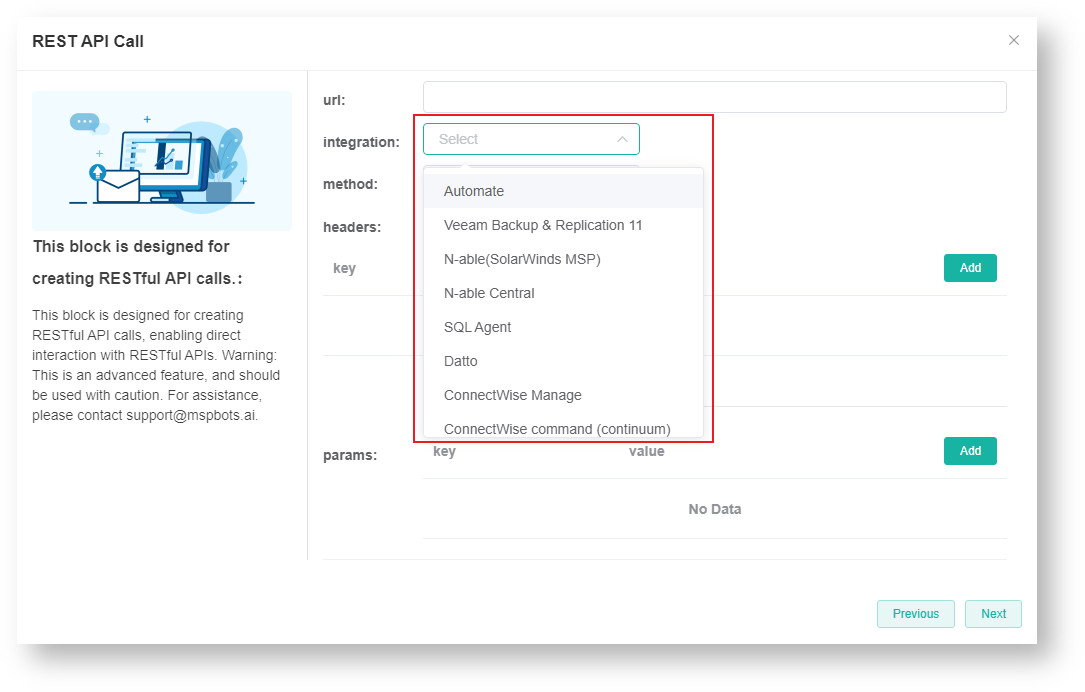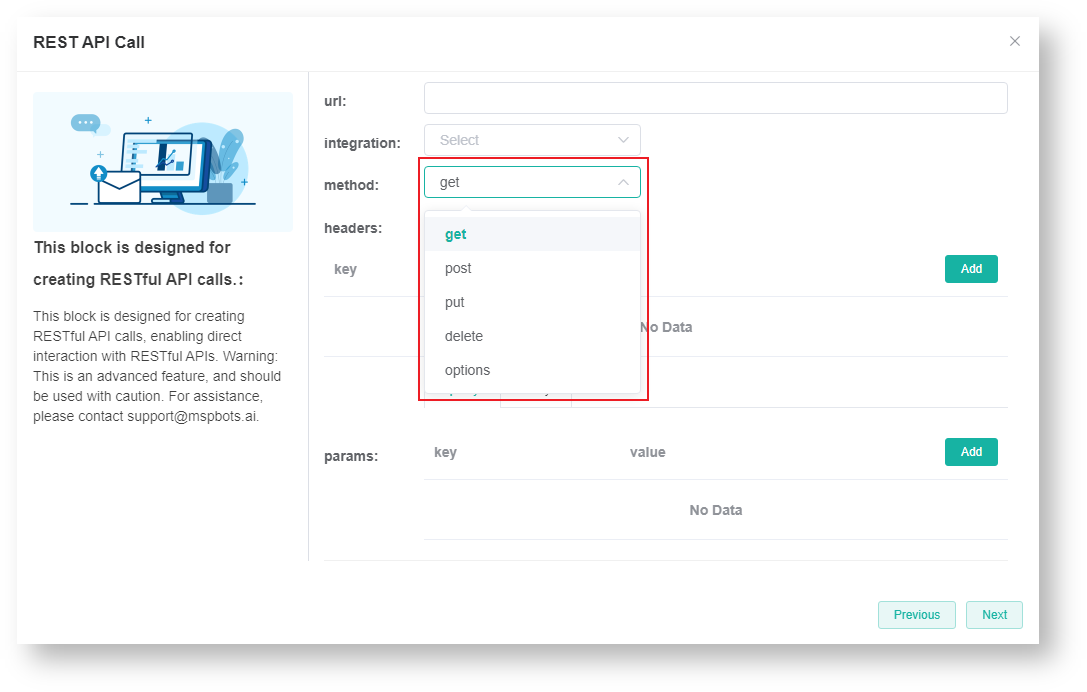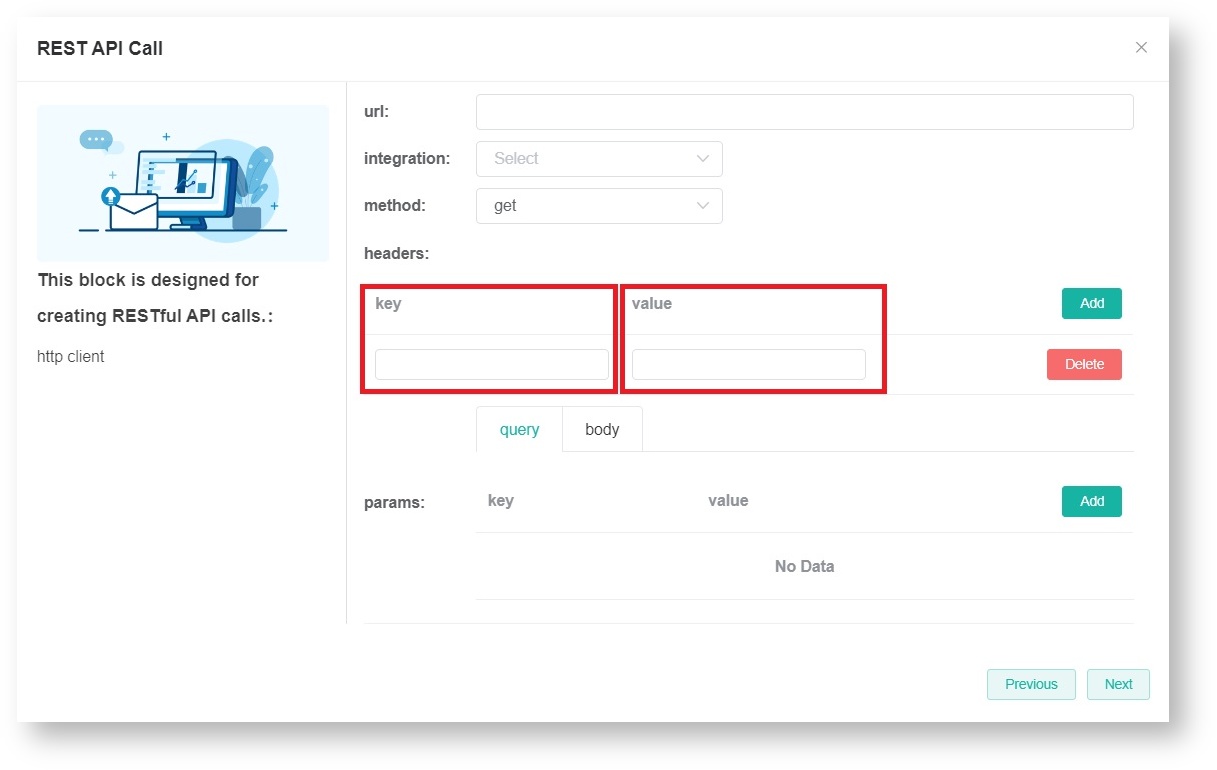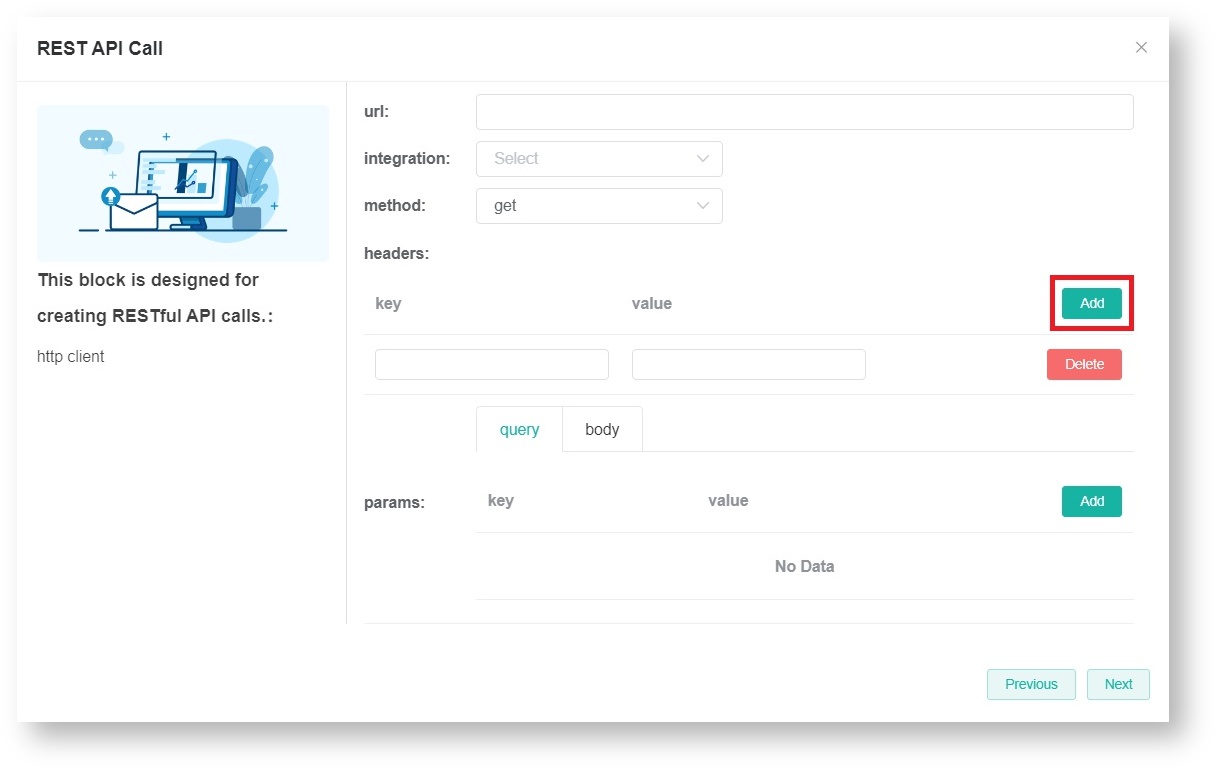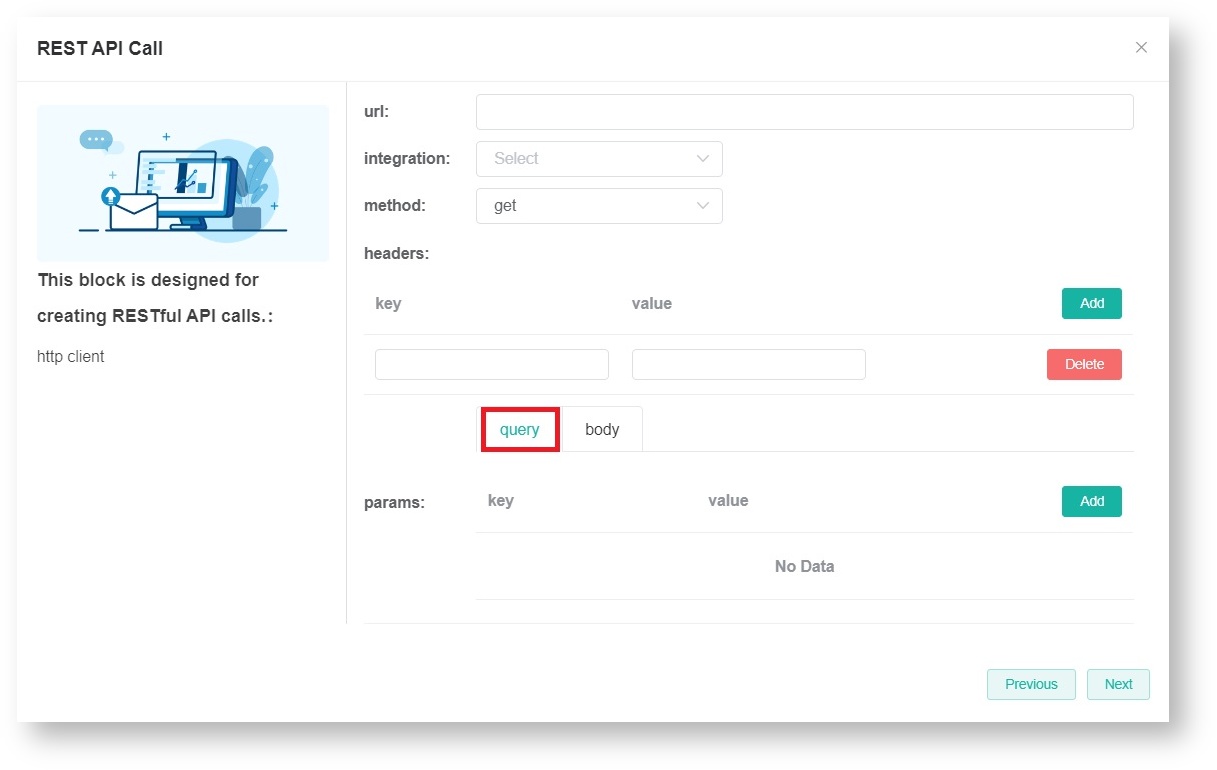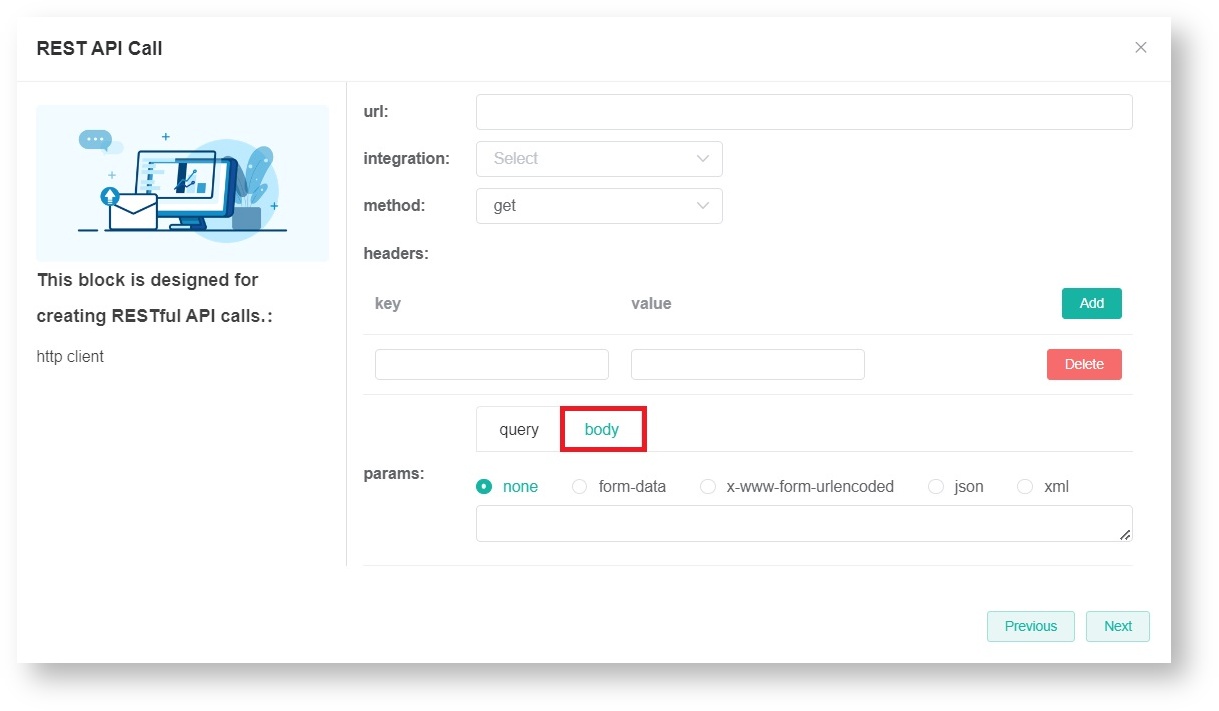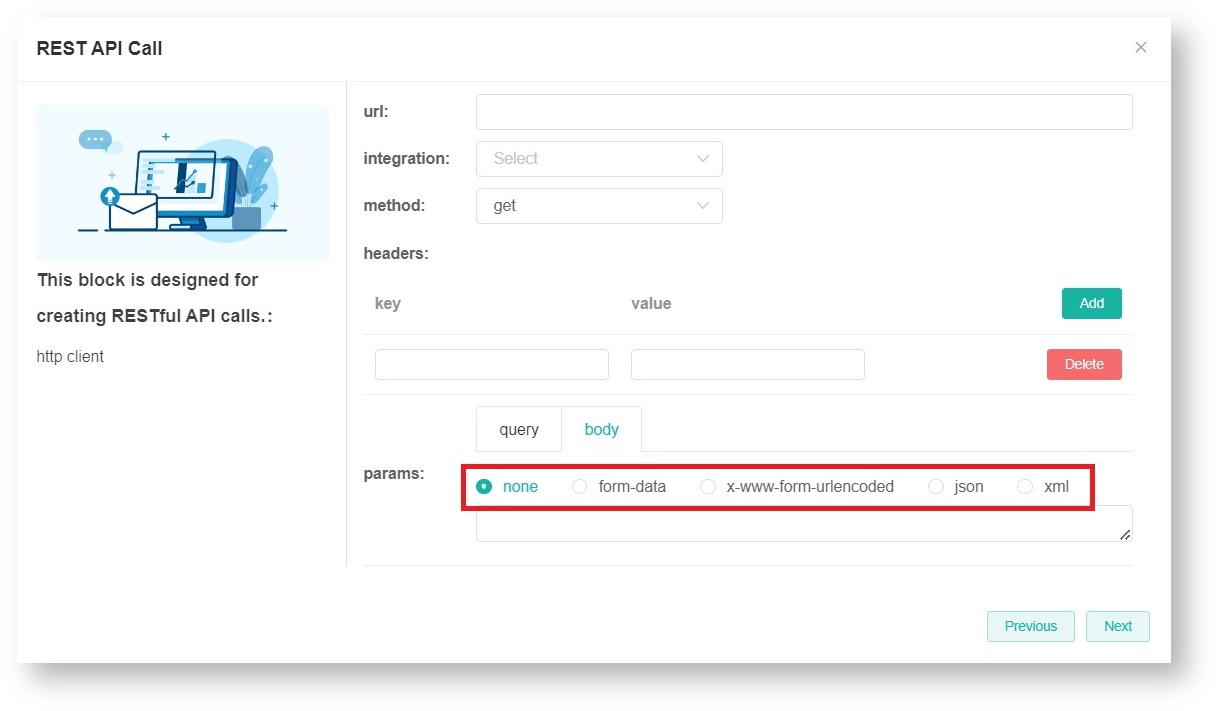 N O T I C E
N O T I C E 
MSPbots WIKI is moving to a new home at support.mspbots.ai![]() to give you the best experience in browsing our Knowledge Base resources and addressing your concerns. Click here
to give you the best experience in browsing our Knowledge Base resources and addressing your concerns. Click here![]() for more info!
for more info!
Page History
The API write-back can be customized by configuring the REST API Call bot block. Customizing the API write-back and creating an API REST block enables MSPbots to establish a seamless integration with your systems and allow allows us to retrieve relevant data so we can create reports that will help you monitor your performance, receive alerts, and perform necessary actions programmatically.
This article is a guide on how to configure the REST API Call bot block. It will use the Monitoring [Opened Tickets Today - Template] for_test bot as an example.
To set up the bot block
- Go to Bots on the MSPbots menu.
- Open the bot that you want to add the REST API Call block to, and switch .
- Go to the Design tab. If a window opens, close it.
- Hover over the horizontal line between the blocks. Click and then click , select Add a Block.
Click the blue box to select a , and select the new block. - Enter Type REST API Call into in the search bar , and then click on REST API Call to add .
- Next, hover over the ellipsis for the REST API Call block .
- Click and then click Edit to make your settings.
- and select Edit.
- When the REST API Call window opens, enter the url address that will receive requests.
Enter the url address. - (Optional) Select an an integration.
If the RESTful API you want to configure is you are configuring a REST API from an existing integration integrated with MSPbots, please select that software from the integration list. Otherwise, please do not configure this parameter. - Select the an appropriate HTTP method to use.
- get : Use to retrieve - Retrieves information from the database without modifying or adding data. Results The results are consistent regardless of how many operations are performed.
- post: Use to submit Submits data and add adds operations to the server.
- put: Use to modify Modifies the existing data on the server, . This is similar to POST but focused on modifying rather than except that it modifies instead of adding.
- delete: Use to remove Removes a specific resource, like deleting a record in a database.
- options: A pre-check request made by of the browser to ensure the server accepts the request before sending get, post, put, or delete requests.
- Set Next, set up the headers and input the relevant key and value.
Click Add to add more keys and values.
Please input the relevant key-value pair.
If you need to remove it, click on Delete.
To remove a pair of key and value, click Delete. - Set up the params.
there are usually two methods used Select either the URL query and request body method to pass parameters to the server-side: URL query parameters and request body.- query
URL query parameters are a way of passing parameters through the URL. In the URL, query parameters usually start with a "?" symbol and are separated by "&" symbols.
For example: https://www.example.com/path/to/resource?param1=value1¶m2=value2
- body
The request body is an HTTP request
- with data that is usually part of a POST or PUT request. This data can be in various formats such as JSON, XML, or form data. These parameters are usually used for submitting forms, uploading files, or sending other types of data.
- none
- The params available for the request body method are none, form-data
- , x-www-form-urlencoded
- json
- xml
- , JSON, and XML.
- Click Next to configure any remaining blocks, and click Finish when done. If there are any other blocks, such as an Alert block, after the REST API Call block, click Next to configure the remaining blocks and then click Finish when you're finished.
If there are no more blocks after the REST API Call block, click on Finish to complete your settings.
X-WWW
